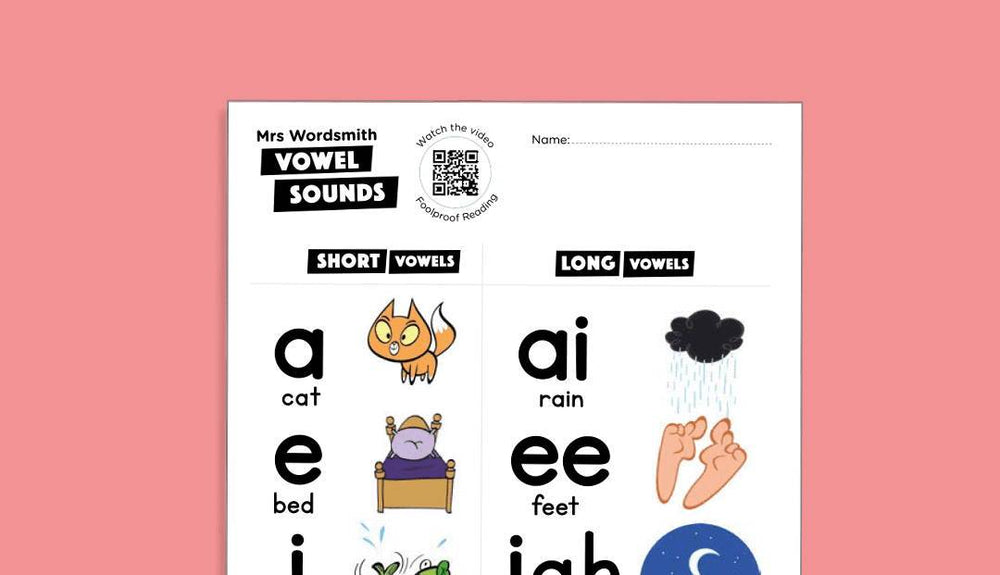You have been redirected to Canada
Would you like to shop the CA store?
Cart
Please be aware that your shipment may be subject to customs charges, for which you will be responsible.

You're Cart is empty!
You might also like:


















Mrs Wordsmith’s Blah Blah Blah is a brilliantly simple and irresistibly fun phonics game that helps children master reading skills through laughter and play. Designed for educators and parents, this fast paced card game turns phonics practice into an engaging experience that children actually want to repeat. With its easy to learn rules and quick rounds, Blah Blah Blah builds essential decoding and blending skills while boosting reading confidence. It’s the perfect blend of fun and phonics empowering children to read fluently, one giggle at a time. Perfect for the classroom or at home, Blah Blah Blah makes an ideal starter or finished work activity, helping children refocus and reset between tasks. Its fast-paced, flexible format means it fits seamlessly into any part of the day whether as a quick transition, a reward for finished work, or a burst of energy to keep learning lively. Wherever it’s played, Blah Blah Blah turns phonics into a joyful habit that sticks. For those of you genuinely interested in “Systematic Synthetic Phonics”, take a peek at our overview of the Science of Reading.For ages 4+Plus, get Readiculous App for free! We make phonics fun! Readiculous teaches kids to read with the science of reading in just 10 minutes a day. The game, endorsed by literacy experts and grounded in scientific research, is designed to engage kids to learn to read through exciting mini-games. Readiculous engages kids to learn the sounds that go with each letter/spelling in a logical progression. As with most new things, repetition is the key to success. This is where we come in, we make learning ridiculously fun (pun intended) by designing reading games for maximum entertainment and educational value. Players learn 2x faster than traditional methods with just 10 minutes of daily play, reflected in personal progress reports showcasing which sounds, letters, and words they’re working on. Readiculous combines fun gameplay with educational content, tailored to support various needs.Note: 3 months of Readiculous Video Game is a non-cumulative promotion limited to one per customer.

"S-a-t-p-i-n? Who sat on a pin? Are they okay? Should I call an ambulance?"These are all pretty common questions when first getting into phonics. Don't worry, we're here to help! This sticker-filled activity book covers 51 foundational phoneme-grapheme correspondences taught in Kindergarten (starting with s-a-t-p-i-n!). It also features high-frequency words, so kids will be able to read short phrases by the end of the book. Get Reading with Phonics was developed with teachers and phonics experts and is curriculum-aligned, making it the perfect tool for young readers. Get ready for a hilarious reading adventure!Ages 5-6We make phonics fun! Readiculous teaches kids to read with the science of reading in just 10 minutes a day.The game, endorsed by literacy experts and grounded in scientific research, is designed to engage kids to learn to read through exciting mini-games. Readiculous engages kids to learn the sounds that go with each letter/spelling in a logical progression. As with most new things, repetition is the key to success. This is where we come in, we make learning ridiculously fun (pun intended) by designing reading games for maximum entertainment and educational value. Players learn 2x faster than traditional methods with just 10 minutes of daily play, reflected in personal progress reports showcasing which sounds, letters, and words they’re working on. Readiculous combines fun gameplay with educational content, tailored to support various needs.Note: 3 months of Readiculous Video Game is a non-cumulative promotion limited to one per customer.

Chat with Mrs Wordsmith
Hello, and welcome to Mrs Wordsmith support.
How can I help you today?
I can help you with:

Comment
Leave a comment